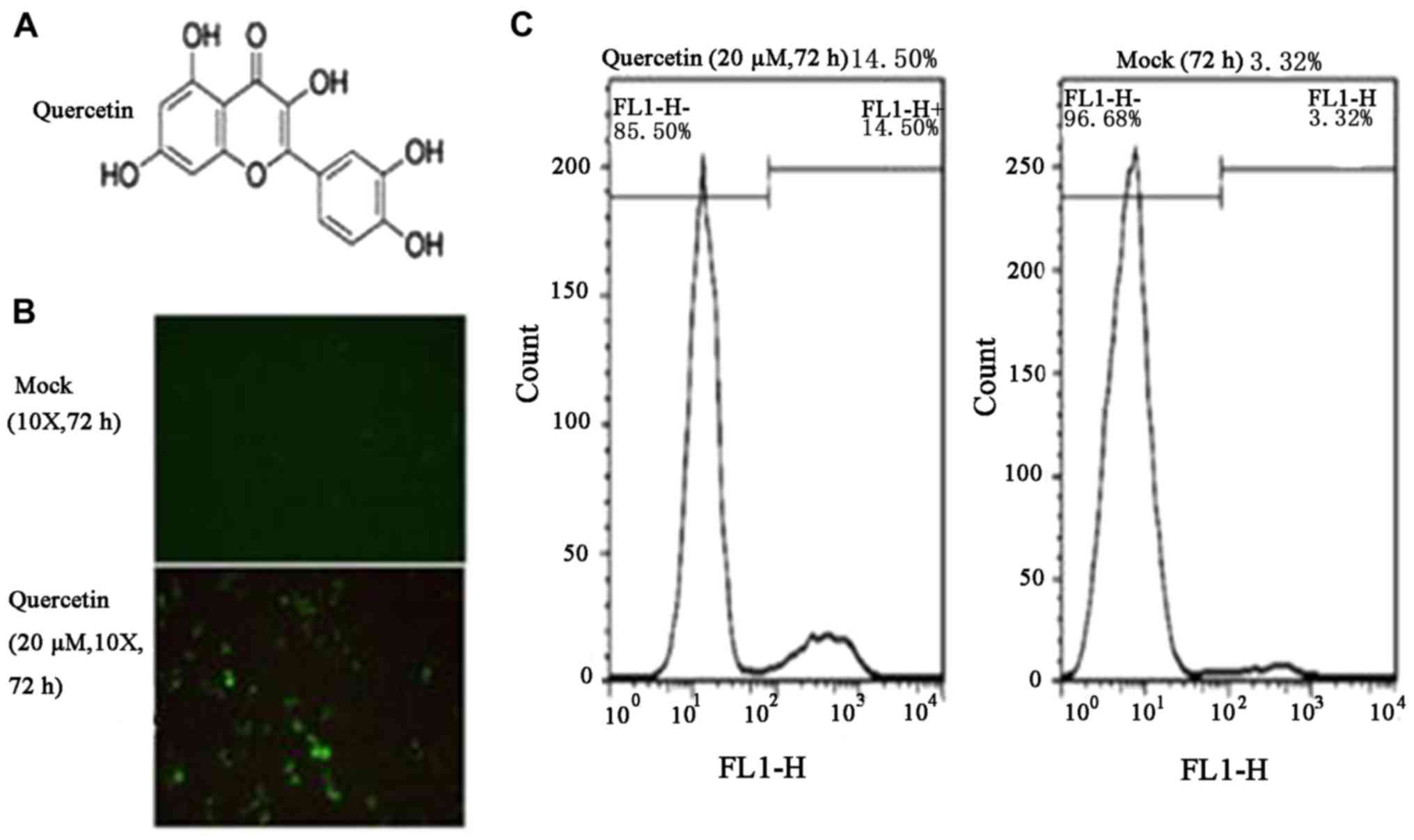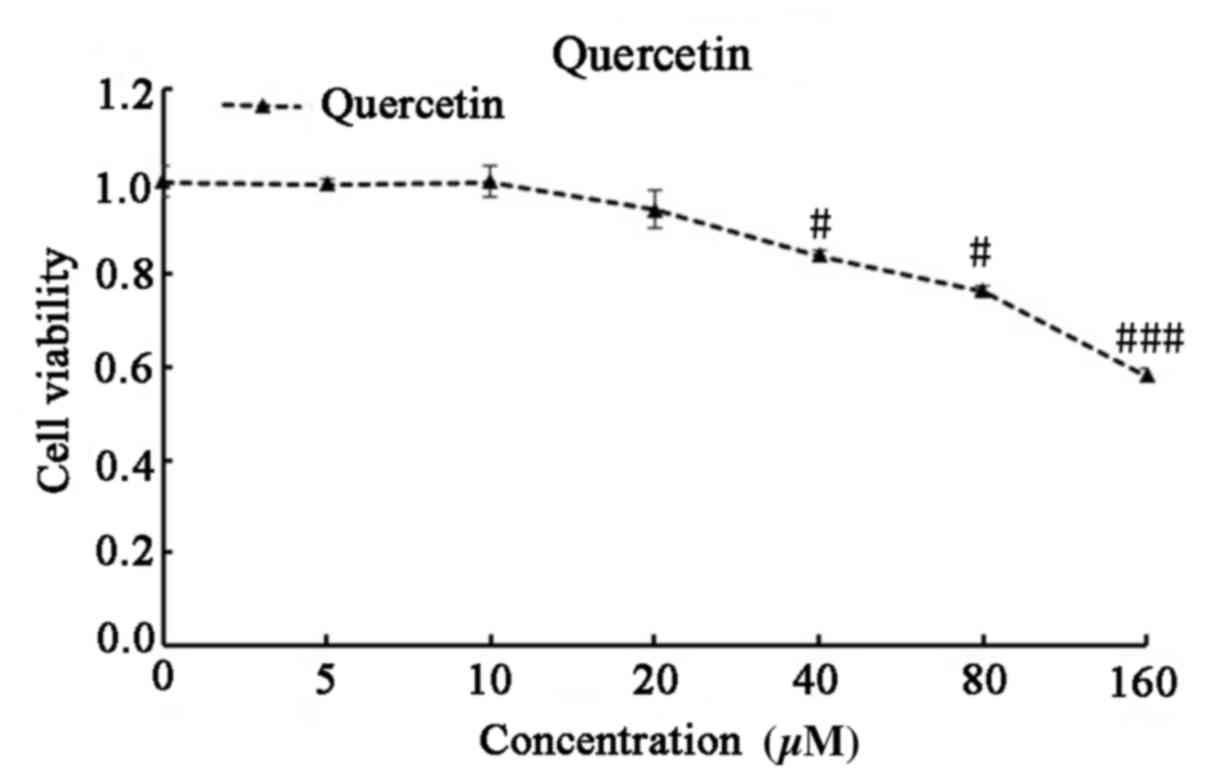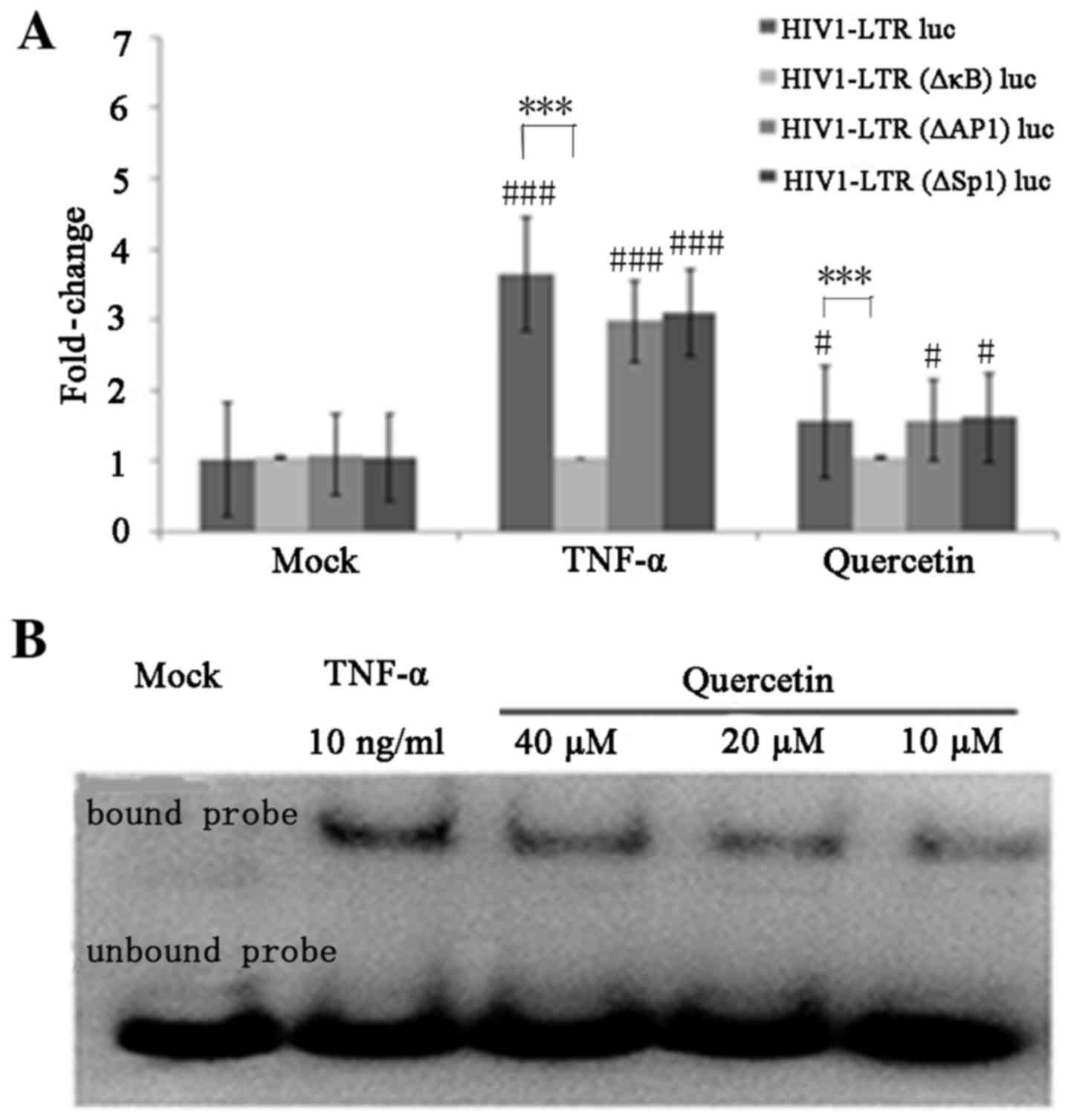|
1
|
Davey RT Jr, Bhat N, Yoder C, Chun TW,
Metcalf JA, Dewar R, Natarajan V, Lempicki RA, Adelsberger JW,
Miller KD, et al: HIV-1 and T cell dynamics after interruption of
highly active antiretroviral therapy (HAART) in patients with a
history of sustained viral suppression. Proc Natl Acad Sci USA.
96:pp. 15109–15114. 1999; View Article : Google Scholar : PubMed/NCBI
|
|
2
|
Dahabieh MS, Battivelli E and Verdin E:
Understanding HIV latency: The road to an HIV cure. Annu Rev Med.
66:407–421. 2015. View Article : Google Scholar : PubMed/NCBI
|
|
3
|
Lohse N, Hansen AB, Pedersen G, Kronborg
G, Gerstoft J, Sørensen HT, Vaeth M and Obel N: Survival of persons
with and without HIV infection in Denmark, 1995–2005. Ann Intern
Med. 146:87–95. 2007. View Article : Google Scholar : PubMed/NCBI
|
|
4
|
Finzi D, Hermankova M, Pierson T, Carruth
LM, Buck C, Chaisson RE, Quinn TC, Chadwick K, Margolick J,
Brookmeyer R, et al: Identification of a reservoir for HIV-1 in
patients on highly active antiretroviral therapy. Science.
278:1295–3100. 1997. View Article : Google Scholar : PubMed/NCBI
|
|
5
|
Wong JK, Hezareh M, Günthard HF, Havlir
DV, Ignacio CC, Spina CA and Richman DD: Recovery of
replication-competent HIV despite prolonged suppression of plasma
viremia. Science. 278:1291–1295. 1997. View Article : Google Scholar : PubMed/NCBI
|
|
6
|
Strain MC, Little SJ, Daar ES, Havlir DV,
Gunthard HF, Lam RY, Daly OA, Nguyen J, Ignacio CC, Spina CA, et
al: Effect of treatment, during primary infection, on establishment
and clearance of cellular reservoirs of HIV-1. J Infect Dis.
191:1410–1418. 2005. View
Article : Google Scholar : PubMed/NCBI
|
|
7
|
Siliciano JD, Kajdas J, Finzi D, Quinn TC,
Chadwick K, Margolick JB, Kovacs C, Gange SJ and Siliciano RF:
Long-term follow-up studies confirm the stability of the latent
reservoir for HIV-1 in resting CD4+ T cells. Nat Med. 9:727–728.
2003. View Article : Google Scholar : PubMed/NCBI
|
|
8
|
Mehla R, Bivalkar-Mehla S, Zhang R, Handy
I, Albrecht H, Giri S, Nagarkatti P, Nagarkatti M and Chauhan A:
Bryostatin modulates latent HIV-1 infection via PKC and AMPK
signaling but inhibits acute infection in a receptor independent
manner. PLoS One. 5:e111602010. View Article : Google Scholar : PubMed/NCBI
|
|
9
|
Han Y, Lin YB, An W, Xu J, Yang HC,
O'Connell K, Dordai D, Boeke JD, Siliciano JD and Siliciano RF:
Orientation-dependent regulation of integrated HIV-1 expression by
host gene transcriptional readthrough. Cell Host Microbe.
4:134–146. 2008. View Article : Google Scholar : PubMed/NCBI
|
|
10
|
Shan L, Yang HC, Rabi SA, Bravo HC, Shroff
NS, Irizarry RA, Zhang H, Margolick JB, Siliciano JD and Siliciano
RF: Influence of host gene transcription level and orientation on
HIV-1 latency in a primary-cell model. J Virol. 85:5384–5393. 2011.
View Article : Google Scholar : PubMed/NCBI
|
|
11
|
Lenasi T, Contreras X and Peterlin BM:
Transcriptional interference antagonizes proviral gene expression
to promote HIV latency. Cell Host Microbe. 4:123–133. 2008.
View Article : Google Scholar : PubMed/NCBI
|
|
12
|
Mbonye U and Karn J: Control of HIV
latency by epigenetic and non-epigenetic mechanisms. Curr HIV Res.
9:554–567. 2011. View Article : Google Scholar : PubMed/NCBI
|
|
13
|
Margolis DM, Garcia JV, Hazuda DJ and
Haynes BF: Latency reversal and viral clearance to cure HIV-1.
Science. 353:aaf65172016. View Article : Google Scholar : PubMed/NCBI
|
|
14
|
Del Prete GQ, Shoemaker R, Oswald K, Lara
A, Trubey CM, Fast R, Schneider DK, Kiser R, Coalter V, Wiles A, et
al: Effect of suberoylanilide hydroxamic Acid (SAHA) administration
on the residual virus pool in a model of combination antiretroviral
therapy-mediated suppression in SIVmac239-infected indian rhesus
macaques. Antimicrob Agents Chemother. 58:6790–6806. 2014.
View Article : Google Scholar : PubMed/NCBI
|
|
15
|
Mazzoccoli G, Longhitano C and Vinciguerra
M: Cardio-hepatic metabolic derangements and valproic acid. Curr
Clin Pharmacol. 9:165–170. 2014. View Article : Google Scholar : PubMed/NCBI
|
|
16
|
Huber K, Doyon G, Plaks J, Fyne E, Mellors
JW and Sluis-Cremer N: Inhibitors of histone deacetylases:
Correlation between isoform specificity and reactivation of HIV
type 1 (HIV-1) from latently infected cells. J Biol Chem.
286:22211–22218. 2011. View Article : Google Scholar : PubMed/NCBI
|
|
17
|
Rasmussen TA, Schmeltz Søgaard O,
Brinkmann C, Wightman F, Lewin SR, Melchjorsen J, Dinarello C,
Østergaard L and Tolstrup M: Comparison of HDAC inhibitors in
clinical development: Effect on HIV production in latently infected
cells and T-cell activation. Hum Vaccin Immunother. 9:993–1001.
2013. View
Article : Google Scholar : PubMed/NCBI
|
|
18
|
Hao Y, Zhang Y, Zhou X, Qu X, Wang P, Liu
S, Lu D and Zhu H: Selective histonedeacetylase inhibitor M344
intervenes in HIV-1 latency through increasing histone acetylation
and activation of NF-kappaB. PLoS One. 7:e488322012. View Article : Google Scholar : PubMed/NCBI
|
|
19
|
Folks TM, Clouse KA, Justement J, Rabson
A, Duh E, Kehrl JH and Fauci AS: Tumor necrosis factor alpha
induces expression of human immunodeficiency virus in a chronically
infected T-cell clone. Proc Natl Acad Sci USA. 86:pp. 2365–2368.
1989; View Article : Google Scholar : PubMed/NCBI
|
|
20
|
Wang P, Qu X, Wang X, Liu L, Zhu X, Zeng H
and Zhu H: As2O3 synergistically reactivate latent HIV-1 by
induction of NF-κB. Antiviral Res. 100:688–697. 2013. View Article : Google Scholar : PubMed/NCBI
|
|
21
|
Fernandez G and Zeichner SL: Cell
line-dependent variability in HIV activation employing DNMT
inhibitors. Virol J. 7:2662010. View Article : Google Scholar : PubMed/NCBI
|
|
22
|
Imai K, Togami H and Okamoto T:
Involvement of histone H3 lysine 9 (H3K9) methyltransferase G9a in
the maintenance of HIV-1 latency and its reactivation by BIX01294.
J Biol Chem. 285:16538–16545. 2010. View Article : Google Scholar : PubMed/NCBI
|
|
23
|
Williams SA, Chen LF, Kwon H, Fenard D,
Bisgrove D, Verdin E and Greene WC: Prostratin antagonizes HIV
latency by activating NF-kappaB. J Biol Chem. 279:42008–42017.
2004. View Article : Google Scholar : PubMed/NCBI
|
|
24
|
Vlach J and Pitha PM: Hexamethylene
bisacetamide activates the human immunodeficiency virus type 1
provirus by an NF-kappa B-independent mechanism. J Gen Virol.
74:2401–2408. 1993. View Article : Google Scholar : PubMed/NCBI
|
|
25
|
Xing S, Bullen CK, Shroff NS, Shan L, Yang
HC, Manucci JL, Bhat S, Zhang H, Margolick JB, Quinn TC, et al:
Disulfiram reactivates latent HIV-1 in a Bcl-2-transduced primary
CD4+ T cell model without inducing global T cell activation. J
Virol. 85:6060–6064. 2011. View Article : Google Scholar : PubMed/NCBI
|
|
26
|
Larson AJ, Symons JD and Jalili T:
Therapeutic potential of quercetin to decrease blood pressure:
Review of efficacy and mechanisms. Adv Nutr. 3:39–46. 2012.
View Article : Google Scholar : PubMed/NCBI
|
|
27
|
Fesen MR, Kohn KW, Leteurtre F and Pommier
Y: Inhibitors of human immunodeficiency virus integrase. Proc Natl
Acad Sci USA. 90:pp. 2399–2403. 1993; View Article : Google Scholar : PubMed/NCBI
|
|
28
|
Tanaka R, Tsujii H, Yamada T, Kajimoto T,
Amano F, Hasegawa J, Hamashima Y, Node M, Katoh K and Takebe Y:
Novel 3alpha-methoxyserrat-14-en-21beta-ol (PJ-1) and
3beta-methoxyserrat-14-en-21beta-ol (PJ-2)-curcumin, kojic acid,
quercetin, and baicalein conjugates as HIV agents. Bioorg Med Chem.
17:5238–5246. 2009. View Article : Google Scholar : PubMed/NCBI
|
|
29
|
Ying H, Zhang Y, Zhou X, Qu X, Wang P, Liu
S, Lu D and Zhu H: Selective histonedeacetylase inhibitor M344
intervenes in HIV-1 latency through increasing histone acetylation
and activation of NF-kappaB. PLoS One. 7:e488322012. View Article : Google Scholar : PubMed/NCBI
|
|
30
|
Wang P, Qu X, Wang X, Liu L, Zhu X, Zeng H
and Zhu H: As2O3 synergistically reactivate latent HIV-1 by
induction of NF-κB. Antiviral Res. 100:688–697. 2013. View Article : Google Scholar : PubMed/NCBI
|
|
31
|
Ding D, Qu X, Li L, Zhou X, Liu S, Lin S,
Wang P, Liu S, Kong C, Wang X, et al: Involvement of histone
methyltransferase GLP in HIV-1 latency through catalysis of H3K9
dimethylation. Virology. 440:182–189. 2013. View Article : Google Scholar : PubMed/NCBI
|
|
32
|
Kutner RH, Zhang XY and Reiser J:
Production, concentration and titration of pseudotyped HIV-1-based
lentiviral vectors. Nat Protoc. 4:495–505. 2009. View Article : Google Scholar : PubMed/NCBI
|
|
33
|
Lin S, Zhang Y, Ying H and Zhu H: HIV-1
reactivation induced by apicidin involves histone modification in
latently infected cells. Curr HIV Res. 9:202–208. 2011. View Article : Google Scholar : PubMed/NCBI
|
|
34
|
Wang FX, Xu Y, Sullivan J, Souder E,
Argyris EG, Acheampong EA, Fisher J, Sierra M, Thomson MM, Najera
R, et al: IL-7 is a potent and proviral strain-specific inducer of
latent HIV-1 cellular reservoirs of infected individuals on virally
suppressive HAART. J Clin Invest. 115:128–137. 2005. View Article : Google Scholar : PubMed/NCBI
|
|
35
|
Bren GD, Whitman J, Cummins N, Shepard B,
Rizza SA, Trushin SA and Badley AD: Infected cell killing by HIV-1
protease promotes NF-kappaB dependent HIV-1 replication. PLoS One.
3:e21122008. View Article : Google Scholar : PubMed/NCBI
|
|
36
|
Lilling G, Elena N, Sidi Y and
Bakhanashvili M: p53-associated 3′→5′ exonuclease activity in
nuclear and cytoplasmic compartments of cells. Oncogene.
22:233–245. 2003. View Article : Google Scholar : PubMed/NCBI
|
|
37
|
Kulkosky J, Culnan DM, Roman J, Dornadula
G, Schnell M, Boyd MR and Pomerantz RJ: Prostratin: Activation of
latent HIV-1 expression suggests a potential inductive adjuvant
therapy for HAART. Blood. 98:3006–3015. 2001. View Article : Google Scholar : PubMed/NCBI
|
|
38
|
Reuse S, Calao M, Kabeya K, Guiguen A,
Gatot JS, Quivy V, Vanhulle C, Lamine A, Vaira D, Demonte D, et al:
Synergistic activation of HIV-1 expression by deacetylase
inhibitors and prostratin: Implications for treatment of latent
infection. PLoS One. 4:e60932009. View Article : Google Scholar : PubMed/NCBI
|
|
39
|
Victoriano AF and Okamoto T:
Transcriptional control of HIV replication by multiple modulators
and their implication for a novel antiviral therapy. AIDS Res Hum
Retroviruses. 28:125–138. 2012. View Article : Google Scholar : PubMed/NCBI
|
|
40
|
Persaud D, Zhou Y, Siliciano JM and
Siliciano RF: Latency in human immunodeficiency virus Type 1
infection: No easy answers. J Virol. 77:1659–1665. 2003. View Article : Google Scholar : PubMed/NCBI
|
|
41
|
Shan L and Siliciano RF: From reactivation
of latent HIV-1 to elimination of the latent reservoir: The
presence of multiple barriers to viral eradication. Bioessays.
35:544–552. 2013. View Article : Google Scholar : PubMed/NCBI
|
|
42
|
Shishido T, Wolschendorf F, Duverger A,
Wagner F, Kappes J, Jones J and Kutsch O: Selected drugs with
reported secondary cell-differentiating capacity prime latent HIV-1
infection for reactivation. J Virol. 86:9055–9069. 2012. View Article : Google Scholar : PubMed/NCBI
|
|
43
|
Katlama C, Deeks SG, Autran B,
Martinez-Picado J, van Lunzen J, Rouzioux C, Miller M, Vella S,
Schmitz JE, Ahlers J, et al: Barriers to a cure for HIV: New ways
to target and eradicate HIV-1 reservoirs. Lancet. 381:2109–2117.
2013. View Article : Google Scholar : PubMed/NCBI
|
|
44
|
Rasmussen TA and Lewin SR: Shocking HIV
out of hiding: Where are we with clinical trials of latency
reversing agents? Curr Opin HIV AIDS. 11:394–401. 2016. View Article : Google Scholar : PubMed/NCBI
|
|
45
|
Xing S and Siliciano RF: Targeting HIV
latency: Pharmacologic strategies toward eradication. Drug Discov
Today. 18:541–551. 2013. View Article : Google Scholar : PubMed/NCBI
|
|
46
|
Darcis G, Van DB and Van LC: HIV latency:
should we shock or lock? Trends Immunol. 38217–22. (8)2017.
View Article : Google Scholar : PubMed/NCBI
|
|
47
|
Nair MPN, Saiyed ZM, Gandhi NH and
Ramchand CN: The Flavonoid, Quercetin, Inhibits HIV-1 Infection in
normal peripheral blood mononuclear cells. Am J Infect Dis.
5:135–141. 2009. View Article : Google Scholar
|
|
48
|
Moog C, Kuntz-Simon G, Caussin-Schwemling
C and Obert G: Sodium valproate, an anticonvulsant drug, stimulates
human immunodeficiency virus type 1 replication independently of
glutathione levels. J Gen Virol. 77:1993–1999. 1996. View Article : Google Scholar : PubMed/NCBI
|
|
49
|
Hezareh M: Prostratin as a new therapeutic
agent targeting HIV viral reservoirs. Drug News Perspect.
18:496–500. 2005. View Article : Google Scholar : PubMed/NCBI
|
|
50
|
Márquez N, Calzado MA, Sánchez-Duffhues G,
Pérez M, Minassi A, Pagani A, Appendino G, Diaz L, Muñoz-Fernández
MA and Muñoz E: Differential effects of phorbol-13-monoesters on
human immunodeficiency virus reactivation. Biochem Pharmacol.
75:1370–1380. 2008. View Article : Google Scholar : PubMed/NCBI
|
|
51
|
Chan JK, Bhattacharyya D, Lassen KG,
Ruelas D and Greene WC: Calcium/calcineurin synergizes with
prostratin to promote NF-κB dependent activation of latent HIV.
PLoS One. 8:e777492013. View Article : Google Scholar : PubMed/NCBI
|
|
52
|
Suñé C and García-Blanco MA: Sp1
transcription factor is required for in vitro basal and
Tat-activated transcription from the human immunodeficiency virus
type 1 long terminal repeat. J Virol. 69:6572–6576. 1995.PubMed/NCBI
|
|
53
|
Perkins ND, Edwards NL, Duckett CS,
Agranoff AB, Schmid RM and Nabel GJ: A cooperative interaction
between NF-kappaB and Sp1 is required for HIV-1 enhancer
activation. EMBO J. 12:3551–3558. 1993.PubMed/NCBI
|
|
54
|
Indra MR, Karyono S, Ratnawati R and Malik
SG: Quercetin suppresses inflammation by reducing ERK1/2
phosphorylation and NF kappaB activation in Leptin-induced human
umbilical vein endothelial cells (HUVECs). BMC Res Notes.
6:2752013. View Article : Google Scholar : PubMed/NCBI
|














